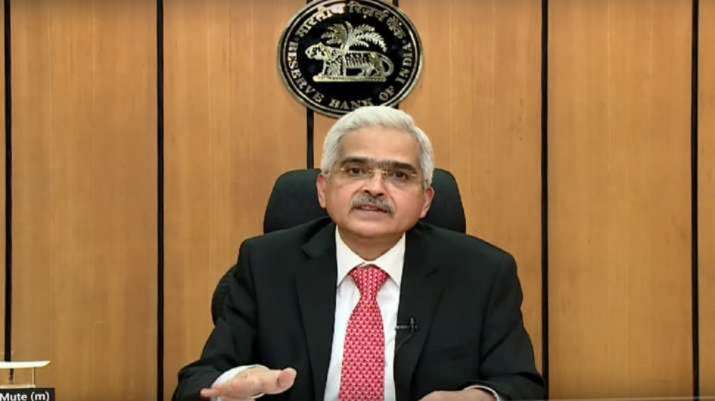Answer – The structure of the Indian Financial Markets is simple and easy to understand. But before going into the structure of the Indian markets let us first look at the Indian economy in general and then explore the layers of the Indian Financial Markets. This will help us in understanding the structure in a better manner.
Indian Economy at a Glance
Firstly, let’s go back to school’s NCERTs where we have studied the 3 sectors of the Indian Economy.
- Primary Sector – Agriculture – 20.19% of GVA
- Secondary Sector – Manufacturing – 25.92 % of GVA
- Tertiary Sector – Services – 53.89% of GVA
Most of the data provide a reference to GDP numbers. However, for our understanding, we will use GDP along with the GVA value as a metric because when we will compare different sectors GVA will become more important. To understand what is GVA? watch a 2-minute video below.
The exact replica of the Indian economy can be seen in the Indian Equities Markets. As a result of which banking, IT, logistics sectors are dominating the indices of the exchanges. From the above sector-specific data, we can see that the contribution of the service sector in terms of GVA – 53.89% to the Indian economy is maximum.
Types of Market
There are many types of markets for example share market, bond market, commodities market etc. All these markets can be divided into two categories and they are as follows.
Organized Market (Formal Sector)- Markets that are regulated and governed by the Government of India for example – Registered companies, listed companies etc fall into the category of the organized market.
Unorganized Market (Informal Sector)- Market that runs on its own for example street vendors, unregistered shops, unregistered small scale businesses are known as unorganized markets.

We are going to discuss the organized sector of the market because our area of activity will be restricted to the organized sector.
SBI on the 5th of November 2021 published a report on the formalization of the Indian economy which can be read at The Print. All this information is essential for us to make a decision about our investments.
Layers of the Indian Financial Markets
Firstly, the Indian market is a layered structure similar to an onion. Each layer has its own set of functions. We will study each layer in brief. The following are the layers of the Indian Financial markets
- Market makers
- Regulators
- Facilitators
- Market participators
#1 Indian Market Makers
Firstly, the Indian market makers include institutions. These institutions create a framework and formulate the rules, laws governing the Indian financial markets. Secondly, these rules are based upon global best practices. Therefore, we can say that the objective of market makers is to create a fair, transparent and accountable mechanism.
The main market activity is trading, investing and creating new forms of assets.
- Exchanges – Prominent are NSE and BSE
- Banks – All banks with banking lincenses from RBI
- Clearing Houses – List of Clearing Houses
- Depositories – NSDL & CDSL
- Registrars to an issue and Transfer Agent – There are many institutions approved by SEBI
- Depository participants – Mostly brokers and Corporation assigned by SEBI
#2 Indian Financial Markets Regulators
Firstly and foremostly the most Powerful layer of the market is the market regulators. Secondly, these institutions regulate the activity of market makers and market participants. Therefore both parties have to adhere to the rules and regulations laid down by the market regulators. The market regulators are usually the government institutions. In India, both the government as well as private bodies constitute the regulators.
- RBI – Reserve Bank of India
- Ministry of Finance
- Ministry of Corporate Affairs
- SEBI – Securities and Exchange Board of India
- PFRDA – Pension Fund Regulatory Development Authority
- IRDAI – Insurance Regulatory Development Authority of India
- AMFI – Association of Mutual Fund of India
There might be sector-specific government entities as well, but broadly these are the major institutions. Therefore the list includes only prominent institutions.

#3 Market Facilitators
The role of the market facilitators is to innovate and create an easy process for onboarding the market participators. Firstly, market facilitators are the agents of market makers. Secondly, they lure investors and institutions by making the onboarding process easy and smooth for an investor participating in the Indian Financial Markets.
- Brokerage Firms
- Issuer of Securities and Lead Manager to an Issue
- Registrar and Transfer Agents
- Sub brokers and other Agents like Insurance Agents
#4 Market Participators
Lastly, we the individuals contribute to the making of the Indian financial markets. Without people, there is no market. All the institutions and regulations are made just to protect our interests.
- Resident Indian/ NRI / PIO/ OCI etc basically individual Indian
- Corporate bodies and institutions like Banks, Mutual Funds, Pension Funds, Insurance companies etc.
- Governments and foreign bodies

Last but not least we have tried to paint a picture of the Indian market in a much simpler way. However, we have skipped many details like how institutions govern the markets and so on. Basically what we are looking at is a skeleton, the bones, flesh, muscle and teeth will be added soon.



